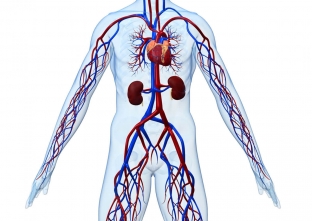Arterial hypertension affects more and more people every year, including young people. The presence of high blood pressure in young people or even in children is indicative of malignant renal (renovascular) hypertension.
Early detection and treatment of renovascular hypertension will prevent complications. What are the symptoms of renal hypertension? What diagnostic methods are used to confirm and verify the diagnosis, read on estet-portal.com.
Clinical manifestations of the development of renovascular hypertension
Increased blood pressure in fibromuscular dysplasia is usually detected at a young or childhood age. Renovascular hypertension has a malignant and severe course, which is accompanied by left ventricular myocardial hypertrophy and retinopathy. Renovascular hypertension is often resistant to complex antihypertensive therapy.
Decreased renal function in fibromuscular dysplasia develops in the later stages or is completely absent. Urinary syndrome is not typical. Perhaps the development of microalbuminuria or minimal proteinuria. In the presence of bilateral renal artery stenosis, the elderly may experience relapses of pulmonary edema due to cardiac decompensation and severe volume-dependent arterial hypertension.
Atherosclerotic kidney disease is often detected by changes in the kidneys. The first sign is a previously progressive decline in filtration function. In urine tests, deviations are minimally expressed - moderate proteinuria, urine sediment is not changed (with the exception of cases of renal vascular thrombosis and cholesterol embolism). When ACE inhibitors or angiotensin receptor blockers are prescribed, a sharp increase in azotemia makes it possible to suspect atherosclerotic stenosis of the renal arteries.
What is the diagnosis of renovascular hypertension?
Such information and medical history as the duration of the disease and the presence of cardiovascular diseases and complications make it possible to suspect the presence of renovascular hypertension.
During a clinical examination by a doctor, symptoms of violations of cardiac processes are revealed – vascular system. Often atherosclerotic stenosis of the arteries of the kidneys is combined with signs of impaired patency of the vessels in the legs – pulse asymmetry and intermittent claudication syndrome. Insensitive, but very diagnostically significant sign of renovascular hypertension – listening to the characteristic noise in the projection of the renal arteries over the abdominal aorta, which is noted in most patients.
To clarify and differentiate the diagnosis of renovascular hypertension, special laboratory and instrumental research methods are carried out.
Radial diagnostic methods play the main role in the process of verifying the diagnosis renovascular hypertension:
- Ultrasound examination - makes it possible to determine the asymmetry of the kidneys, cicatricial changes, calcification, atherosclerotic deformation of the vascular wall.
- Doppler ultrasound is used as a screening method, allowing visualization of the renal arterial tree.
- Dynamic scintigraphy – allows you to see and quantify the intake and accumulation of the radiopharmaceutical. This is how the blood flow of the kidneys and the activation of the intrarenal renin-angiotensin system are displayed.

Laboratory and instrumental methods for the study of renovascular hypertension
The most sensitive marker of kidney damage – microalbuminuria. Bilateral kidney damage with atherosclerotic stenosis is characterized by an increase in the concentration of creatinine in the blood and a decrease in the glomerular filtration rate in the Rehberg test. Glucose levels and lipid profile are examined to clarify risk factors.
Characteristic for such patients is an increase in plasma renin activity and signs of secondary aldosteronism and hypokalemia. But with a bilateral lesion with impaired renal function, these changes may not be detected.
To increase the specificity and sensitivity of the test, a captopril test is used, which is performed against a background of normal sodium intake for the diagnosis of renovascular hypertension.
Test technique for detecting renovascular hypertension
A few days before the test, the consumption of ACE inhibitors and diuretics is canceled. The test is carried out in a sitting position. Blood is taken twice – before taking 50 mg of captopril and 1 hour after taking it. The sample is considered positive if plasma renin activity is detected after intake of more than 12 ng / ml / h or if its absolute increase is at least 10 ng / ml / h.
The most active method for diagnosing renovascular hypertension is considered determination of plasma renin activity during renal vein catheterization and comparison of its activity in the systemic circulation, from the blood in the inferior vena cava to the confluence of the renal veins. This method has a high risk of complications, so its use is justified only in severe cases, when the question of the advisability of surgical treatment is being decided.
Early detection of renovascular hypertension will help avoid dangerous complications from the cardiovascular and excretory systems.







Add a comment